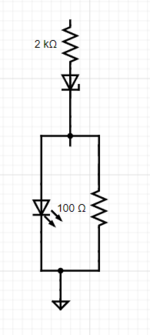Hasan2017
Member level 4
Hi there,
This post is very easy one for you who know better.

I am confused to set some values.
My DC-DC conveters input is 250-650VDC and output is 24V/5A. Its use for PV battery charger.
Take a look here,

I have few more query,
1. My boss want me to put some common ground ZNR” Transient/Surge Absorbers, in folloing manner, https://www.farnell.com/datasheets/2244565.pdf
2. Dont think he needs it unnecessary for protection since there is 2 cap, 1 noise suppreser and rersistors are available.
3. He wants to add a fuse in pin 1 to R24, not sure why?
4 Can you imagine any idea to use R1-3? Those are 1 Mohms.
6. He wants to add a LED indecator for power output, for 5A current whats your idea?
This post is very easy one for you who know better.

I am confused to set some values.
My DC-DC conveters input is 250-650VDC and output is 24V/5A. Its use for PV battery charger.
Take a look here,
I have few more query,
1. My boss want me to put some common ground ZNR” Transient/Surge Absorbers, in folloing manner, https://www.farnell.com/datasheets/2244565.pdf
2. Dont think he needs it unnecessary for protection since there is 2 cap, 1 noise suppreser and rersistors are available.
3. He wants to add a fuse in pin 1 to R24, not sure why?
4 Can you imagine any idea to use R1-3? Those are 1 Mohms.
6. He wants to add a LED indecator for power output, for 5A current whats your idea?
